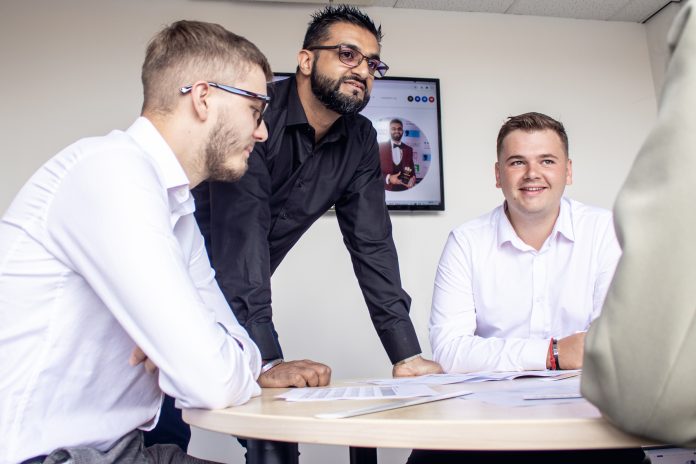New modern methods of construction see the industry choosing faster, automated ways to build through using off-site construction techniques and mass production to improve efficiency, explains Parm Bhangal of Bhangals Construction Consultants
Historically, the construction industry has been slower than other comparative industries with the use of technology, instead relying on traditional skilled tradesmen to do the job.
Many would question, why risk eliminating the need for the skilled tradesman that the industry so values? Ultimately, why fix something that isn’t broken?
But there’s no denying that modern methods of construction do have a place in the sector. There is room for both automated processes and skilled labour – the two don’t necessarily need to be exclusive.
The sector needs to adapt to avoid being left behind
Artificial intelligence is becoming more prevalent across all sectors, with construction being no exception. It is vital that our industry isn’t left behind in a modern, forward-thinking, techno-advanced world.
Bricklaying robots, 3D printing, intelligent HR systems and building information modelling (BIM) systems are slowly infiltrating the sector, and, no doubt, there is more to come. The use of ‘smart construction’ and robotic technology will move things forward significantly, especially for new house builds with repetitive structures, as they are much more systemised.
Large developers regularly build the same type of house on multiple sites across the country and the introduction of modern construction methods can really speed up their turnaround times, which ultimately will see them being more profitable, more quickly.
This can come in different forms. Off site options range from creating 3D volumes, like boxes, off site, and then combining the boxes to make a building, to 2D framing systems or pre-manufactured individual components like columns, walls or staircases.
On site, the methods are more process led, using new, forward thinking systems to drive productivity. This could be by removing unnecessary work stages to speed up the process and even improve health and safety.
Offsite construction can significantly speed up the construction process
Last year, the use of bricklaying robots in High Wycombe saw an entire house go from inception to completion in just 33 hours. The creators believe this is just the beginning for such a method and that they could potentially do the same build in less than 10 hours.
It’s totally possible. Prefabricated houses make the process even quicker and when you build off site there’s more opportunity for state-of-the-art robotics. Obviously, the logistics of putting robots into a building site for on-site fabrication is certainly trickier – but still very much doable.
With the current demand for housing in the UK still outstripping supply, introducing this type of automated technology has the potential to speed up a build, provide less waste days and allow more efficiency. All of which help towards keeping businesses afloat in these challenging times.
Modern technology does not equal a loss of jobs
So, it is important for us to train our workforce on new modern technologies so that bricklaying robots and mass production factory assembly doesn’t necessarily mean the loss of jobs for a skilled workforce.
For those who fear change or worry about the potential threat to their career, it is vital to consider planning ahead and being strategic about this evolution of processes.
Ensure that you are making the most of any opportunity that comes your way. For example, if you’re a bricklayer, you could ensure that you are trained on the operation of any new equipment as soon as possible. That way, you’ll be at the forefront of pioneering approaches to modern methods of construction, as they come along.
But the new technological ways of doing things are still up and coming, and they require both investment into the systems and processes and the training of installers, both of which take time and money.
Technology is a viable solution to the current construction labour shortage
Initial outlay for the latest, state-of-the-art technology could be an eyewatering amount for the average construction business making it prohibitive and unreachable for many once you add the training costs and worry of relying on automation.
However, in the long term, it has the potential to bring a viable solution to the current labour shortage.
Currently, only a small proportion of workers are choosing automated processes and many more people are trained in traditional construction forms.
Remember, there is no substitute for years of experience and well-honed craftsmanship. Our industry is built upon expertise, trust, and honesty. Handmade and bespoke will often trump mass-produced in construction, so there is plenty of room for modern and traditional methods.
Rather than one replacing the other, modern methods of construction and artificial intelligence could make projects safer, more efficient, and hassle-free.
In the long run, they could help address the skills shortage, improve productivity and increase profit margins, and tackle the housing shortage.
How BIM is changing construction
The most important factor for business owners in the construction sector is to look closely at how the changes may affect your business and consider how you might adapt and your options. Diversification can be vital in business survival. However, it depends on your own path. For example, if you’re a bespoke kitchen fitter, you are likely to respond differently to smart construction than a bricklayer.
On the design side, it is becoming more and more common for clients to want to see the end result before it is built.
The Building Information Modelling (BIM) process allows contractors to use computer software to imitate the entire building process, managing a construction project from inception to completion.
Architects, engineers and contractors can work together to cost, design and visualise a build before starting the work.
BIM systems are a game-changer for the construction industry, allowing contractors to go into each project fully prepared and with eyes wide open. It also allows us to successfully manage client expectations and make changes before the building commences where necessary.
Regularly, problems can be avoided from the outset with BIM, improving the building process from inception, as everyone has a better understanding of the extent of the project and the cost involved.
It is something we could all use more. However, it can be costly for the end user, and requires a hefty change in the industry as it needs more architects to choose a virtual drawing environment. Many still prefer a traditional pencil and paper.
You might say that the industry is split between those chasing change and progression and those who value tradition and detail.
But there’s no escaping the fact that the sector will progress with the times. Technological advances arrive daily and the uses of artificial intelligence are only likely to increase. Already people are working on 3D printers which detect and repair design flaws and surveillance drones.
Automation is likely to be a great asset to the industry for the tasks that human workers find difficult. For that reason, is important to stay abreast of new trends and opportunities and have a view of where the market is going and progressing, if you want to ensure that your business continues to be efficient and successful.
Parm Bhangal

Bhangals Construction Consultants














